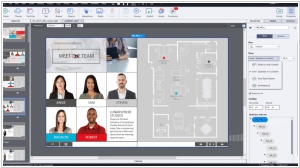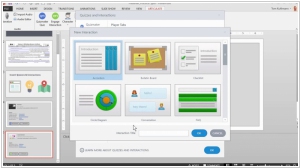Adobe Captivate vs Articulate 360
July 21, 2023 | Author: Adam Levine
4

Train employees, partners and customers effectively with a next-gen LMS. Deliver an enhanced & enjoyable learning experience for your learners. Reduce skill gaps to manage a learner ecosystem that is engaged, compliant and updated. Take advantage of the all-new AI-based Social Learning to encourage learning in the flow of work and allow peers to learn from each other.
4

Articulate 360 includes both Storyline 360 and Rise 360, plus a slew of other authoring apps. Use Storyline 360 to develop custom, interactive courses that work on every device—without any manual tweaking. It's powerful enough for experts, but easy for beginners to create virtually any interaction imaginable. Choose Rise 360 when you want to build fully responsive courses in minutes. All you need is a web browser to quickly create beautiful courses optimized for every screen size.
Adobe Captivate and Articulate 360 are both popular e-learning authoring tools used to create interactive and engaging online courses, but they have distinct differences that cater to different user needs and preferences. One of the key differences lies in their user interface and approach to course creation. Adobe Captivate offers a more robust and flexible authoring environment, allowing users to create highly customizable and complex e-learning courses with a wide range of interactive elements, animations, and simulations. It also provides extensive features for responsive design, making courses adaptable to different devices. On the other hand, Articulate 360, with its suite of tools like Rise 360 and Storyline 360, is designed for ease of use and rapid course development. It offers intuitive drag-and-drop functionality and pre-built templates, making it ideal for users who prioritize quick course creation without sacrificing quality.
Another significant distinction between Adobe Captivate and Articulate 360 is their subscription and licensing models. Adobe Captivate is available through a traditional software licensing model, where users purchase a one-time license for the software. It also offers a subscription option for access to additional features and updates. Articulate 360, on the other hand, is offered as a subscription-based service, providing users with continuous access to the latest updates and new tools. This makes Articulate 360 more suitable for users who prefer a pay-as-you-go model and regular access to new features and improvements.
Lastly, the range of available assets and content libraries differs between Adobe Captivate and Articulate 360. Adobe Captivate provides access to Adobe Stock, an extensive library of multimedia assets, images, and videos, allowing users to enhance their courses with high-quality visual elements. Articulate 360 also offers a content library, but its focus is on pre-built templates and interactions rather than a vast media library. This makes Adobe Captivate a preferred choice for users seeking access to a wide range of multimedia assets and resources to enrich their e-learning content.
See also: Top 10 e-Learning software
Another significant distinction between Adobe Captivate and Articulate 360 is their subscription and licensing models. Adobe Captivate is available through a traditional software licensing model, where users purchase a one-time license for the software. It also offers a subscription option for access to additional features and updates. Articulate 360, on the other hand, is offered as a subscription-based service, providing users with continuous access to the latest updates and new tools. This makes Articulate 360 more suitable for users who prefer a pay-as-you-go model and regular access to new features and improvements.
Lastly, the range of available assets and content libraries differs between Adobe Captivate and Articulate 360. Adobe Captivate provides access to Adobe Stock, an extensive library of multimedia assets, images, and videos, allowing users to enhance their courses with high-quality visual elements. Articulate 360 also offers a content library, but its focus is on pre-built templates and interactions rather than a vast media library. This makes Adobe Captivate a preferred choice for users seeking access to a wide range of multimedia assets and resources to enrich their e-learning content.
See also: Top 10 e-Learning software


